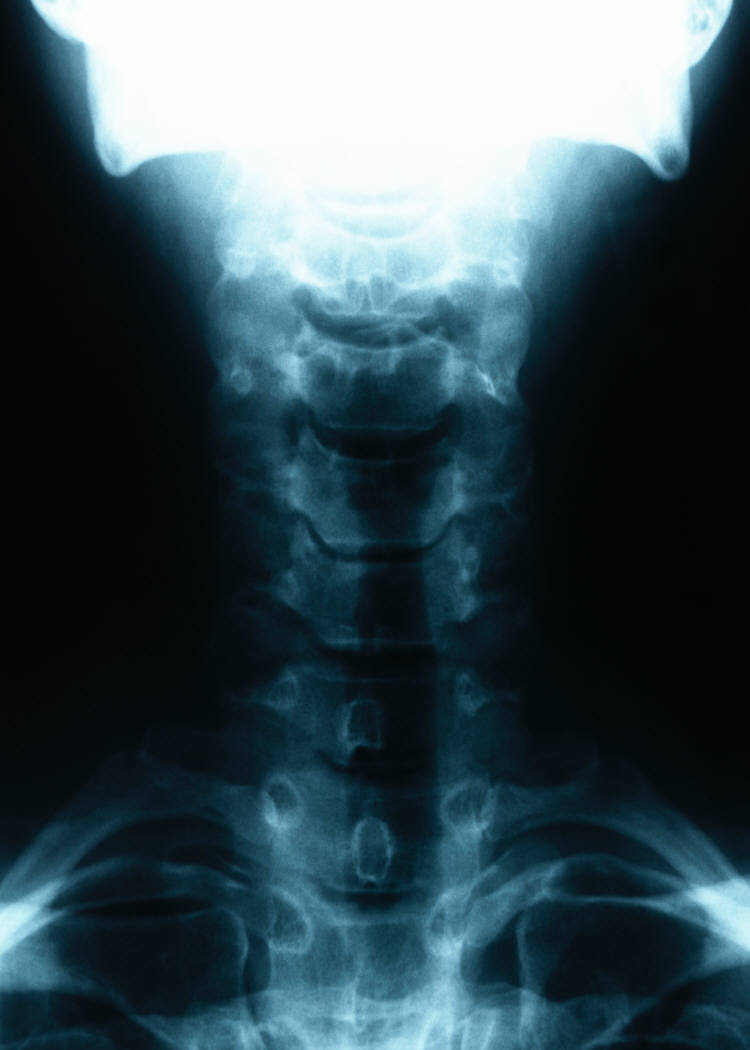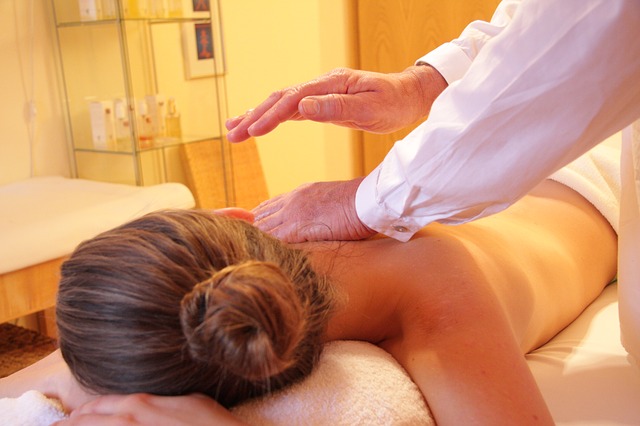Archive for March 2023
Whiplash
Describing a range of injuries to the neck caused by or related to a sudden distortion of the neck. Cervical acceleration-deceleration” (CAD) describes the mechanism of the injury, while the term “whiplash associated disorders” (WAD) describes the injury and symptoms.
Anatomy
There are four phases that occur during “whiplash”:
- Initial position (before the collision),
- retraction
- extension
- rebound
In the initial position there is no force on the neck due to inertia keeping it stable. Anterior longitudinal ligament injuries in whiplash may lead to cervical instability. They explain that during the retraction phase that is when the actual “whiplash” occurs, since there is an unusual loading of soft tissues. The next phase is the extension, the whole neck and head switches to extension, and it is stopped or limited by the head restraint. The rebound phase transpires as result of the phases that are mentioned.
During the refraction phase the spine forms an S-Shaped curve, and this caused by the flexion in the upper planes and hyperextension at the lower planes and this exceed their physiological limits this phase the injuries occur to the lower cervical vertebrae. At the extension phase all cervical vertebrae and the head are fully extended, but do not surpass their physiological limits. Most of the injuries happen in C-5 and C-6.
Symptoms
Symptoms reported by sufferers include: pain and aching to the neck and back, referred pain to the shoulders, sensory disturbance (such as pins and needles) to the arms and legs, and headaches. Symptoms can appear directly after the injury, but often are not felt until days afterwards. Whiplash is usually confined to the spine. The most common areas of the spine affected by whiplash are the neck and middle of the spine. “Neck” pain is very common between the shoulder and the neck.
Neck Pain
Neck pain, although felt in the neck, can be caused by numerous other spinal problems. Neck pain may arise due to muscular tightness in both the neck and upper back, or pinching of the nerves emanating from the cervical vertebrae. Joint disruption in the neck creates pain, as does joint disruption in the upper back. Two-thirds of the population will suffer from neck pain at some point in their lives.
The most common causes of neck pain include:
- Stress
- Prolonged postures
- Minor injuries and falls
- Referred pain
- Over-use
- Whiplash
- Herniated disc
- Pinched nerve
Headaches/Migraines
Nearly 15% of people who make chiropractic visits do so because they suffer from migraines and chronic headaches. During a given year, 90% of people suffer from headaches. Only 1% of headaches seen in the ER have any serious underlying problem. Most reported headaches are caused by tension. Pain can range from mild throbbing pain to unrelenting agony. There are many different sources for headaches, some of which include: stress, overexposure to bright lights, fluctuation in blood sugar, and overexertion in exercise.
Recent studies show that long term chiropractic care can provide benefit to patients suffering from headaches and migraines greater than that of just using drug therapy. Chiropractic treatment has been shown to be especially effective in providing relief to patients suffering from headaches that originate in the neck or cervical area. According to a study conducted by Duke University in 2001, spinal manipulation provided by chiropractic treatment had great results providing patients with immense relief and left them less likely to experience side effects than if they had used medication.
Carpal Tunnel Syndrome
Carpal tunnel syndrome (CTS) is caused by the entrapment of the median nerve in the wrist that then causes paresthesia, pain, numbness, and other symptoms in the distribution of the median nerve. It appears to be caused by a combination of genetic and environmental factors. Some of the predisposing factors include: diabetes, obesity, pregnancy, hypothyroidism, and heavy manual work or work with vibrating tools. The main symptom of CTS is intermittent numbness of the thumb, index, long and radial half of the ring finger. Long-standing CTS leads to permanent nerve damage with constant numbness, atrophy of some of the muscles of the thenar eminence, and weakness of palmar abduction.
The relationship between work and CTS is controversial; in many locations, workers diagnosed with carpal tunnel syndrome are entitled to time off and compensation. In the USA, carpal tunnel syndrome results in an average of $30,000 in lifetime costs (medical bills and lost time from work). Some speculate that carpal tunnel syndrome is provoked by repetitive movement and manipulating activities and that the exposure can be cumulative. It has also been stated that symptoms are commonly exacerbated by forceful and repetitive use of the hand and wrists in industrial occupations.
Suggested healthy habits such as avoiding repetitive stress, work modification through use of ergonomic equipment (wrist rest, mouse pad), taking proper breaks, using keyboard alternatives (digital pen, voice recognition, and dictation), and employing early treatments such as taking turmeric (anti-inflammatory), omega-3 fatty acids, and B vitamins have been proposed as methods to help prevent carpal tunnel syndrome.
Back Pain
Back injuries can develop due to a numerous amount of different factors and circumstances. Some people are more likely to develop back pain than others. Something as simple as twisting the wrong way in bed can cause misalignment of the vertebrae while others may sustain back injuries while working, at home, or from an automotive accident or other traumatic event. Relief from back pain is one of the most common reasons why people seek chiropractic care.
While lower back injuries are the most common, pain in the thoracic pain (middle of the spine) and cervical pain (neck region) of the spinal cord also often occurs. These injuries affect the vertebrae, discs, soft tissues, muscles, and joints of your body. Other parts of your entire body can be affected due to these injuries.
Muscle strain often contributes to lower back pain. The erector spinae, which help keep the spine erect, can become enflamed and spasm. Discs that are not in their proper place due to malformation can cause damage to surrounding discs, joints, nerves, muscles, ligaments, and tendons.
Herniated or degenerative discs are often a cause for upper back pain. Typically rest, ice/heat packs, over-the-counter inflammatory medicine, and pain medicine such as aspirin treat back pain until the muscles are able to return to their lower positions. However, if pain persists after more than a couple weeks, the back may begin to atrophy and become significantly weak. This can leave you open to further injury.
Most cases of back pain are mechanical, meaning they are typically not caused by any serious conditions.
Back pain is experienced by 31 million Americans at any given time and the single leading cause of disability worldwide. According to the US Department of Labor, workers in the health care industry sustain back injury more than any other profession. The number one reported injury in health care is patient handling. 40 to 50 percent of nurses sustain back injury. Workplace injuries cost a total of nearly $50,000 per injury on average for medical treatment and indemnity cost.
Physiotherapy
Physiotherapy is primarily performed as a remedy for impairments and disabilities. The practice of physiotherapy promotes mobility, functional ability, quality of life, and movement through examination, evaluation, diagnosis and physical intervention. This involves working with individuals to prevent the loss of mobility before it occurs by developing fitness and wellness-oriented programs for healthier and more active lifestyles, providing services to individuals and populations to develop, maintain and restore maximum movement and functional ability throughout the lifespan. The effort to ensure this to our best ability includes includes providing therapeutic treatment in circumstances where movement and function are threatened by aging, injury, disease or environmental factors.
Exercise Programs
The practice of exercise, both cardiovascular and muscle strengthening, is, coupled with regular chiropractic care, an immensely important aid to managing lower back pain. Exercise promotes maintaining properly toned muscles, better circulation, and healthy digestion. There is strong evidence supporting that exercise is nearly as effective as all other non-surgical treatments in the relief and treatment of lower back pain.
Massage Therapy
Massage is the manipulation of superficial and deeper layers of muscle and connective tissue using various techniques, to enhance function, aid in the healing process, decrease muscle reflex activity, inhibit motor-neuron excitability, promote relaxation and well-being, and as a recreational activity.
Evidence strongly suggests early mobilization and range of motion exercises greatly improve recovery from nearly any injury or surgery.
Therapeutic Massage is used to:
- Reduce headache-related symptoms including migraines
- Reduce blood pressure
- Reduce stress
- Reduce depression
- Reduce Anxiety
- Reduce Allergies
- Reduce Allergies
- Improve circulation
- Increase muscle elasticity
- Treat sport injuries
- Increase muscle tone, and flexibility
- Allergies
- Relax
Thompson Technique
The Thompson Technique utilizes the “Segmental Drop System” in which patients lay on a “Segmental Drop Table” which has a headpiece that drops as the chiropractor adjusts the vertebrae. This design takes advantage of the natural structure of the joints in the spine by allowing the chiropractor to move the spinal segment in which ever direction it is needed to improve its motion with the joints above and below it. the technique is performed with the patient lying face down on the table and adjustments performed from posterior to anterior.
Diversified Technique
The most commonly used adjustment technique by chiropractors, Diversified Technique is charactered by a high-velocity, low amplitude thrust. Quick and shallow thrusts often result in a cavitation of a joint, causing the popping noise that is often associated with chiropractic adjustments. The objective of this technique is to restore movement and alignment to the spine as well as restore health to joints suffering from joint dysfunction.





